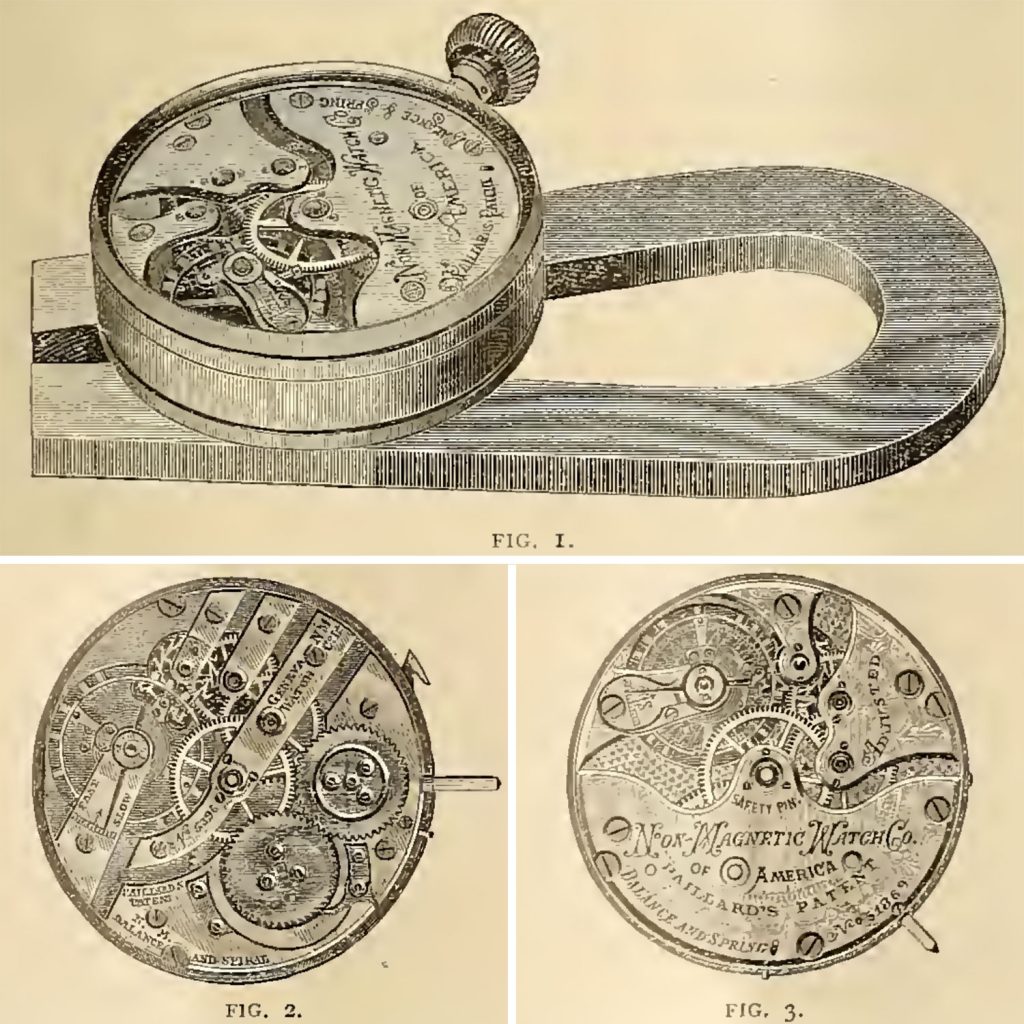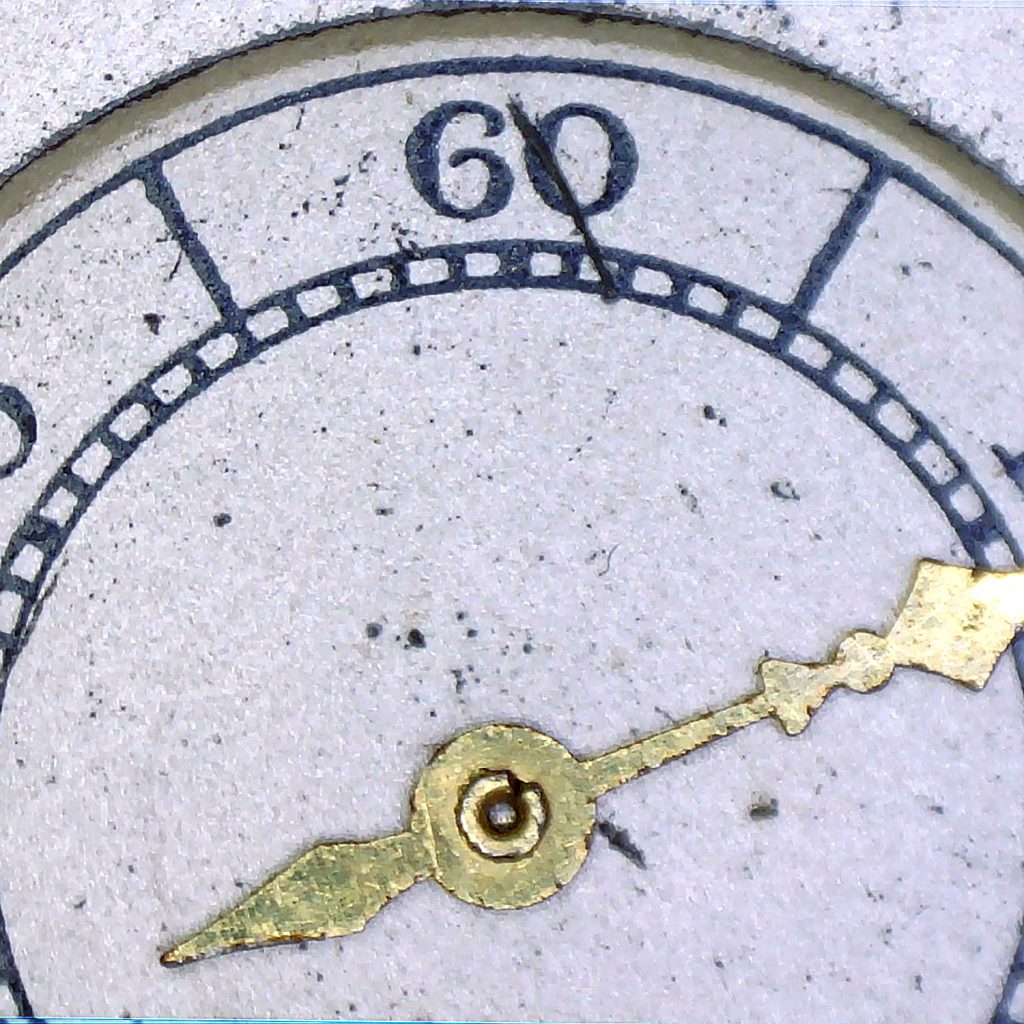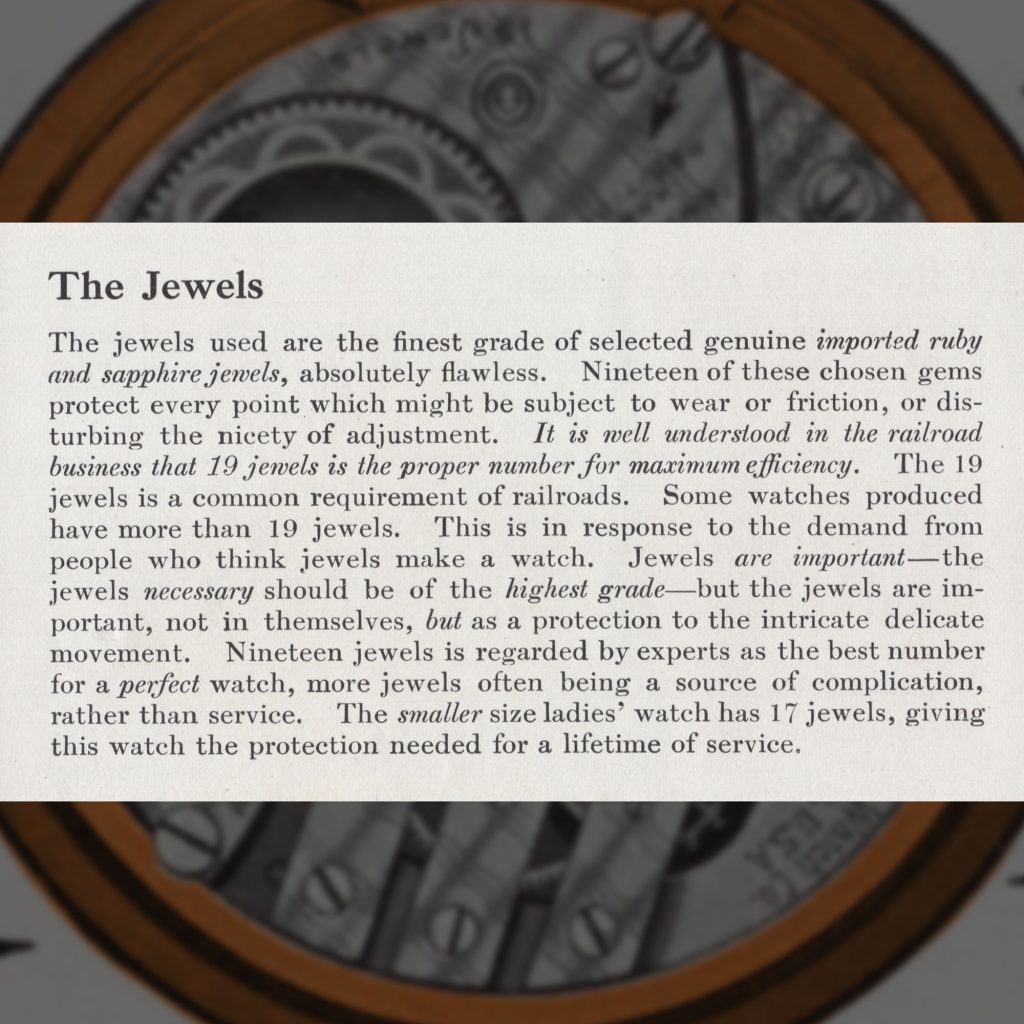Private Label Trade Names on American Pocket Watches: The Non-Magnetic Watch Company: Part 35: Theodore Gribi’s Experiments

After non-magnetic watches and anti-magnetic shields were introduced to the market in the 1880s, the industry was flooded with experiments testing the effectiveness of these new innovations in the presence of magnetism.
In the September 22, 1888 issue of the Western Electrician, Theodore Gribi published an illustrative summary of his extensive experiments on three movements from the Non-Magnetic Watch Company fitted with Paillard’s patented palladium alloys. Over the span of four months, Gribi tested the influence of magnetism and the ability to adjust the watches to temperature.
The first two movements tested were the “Monard Model,” an early product by the Geneva Non-Magnetic Watch Company, traditionally Swiss in appearance. (Note: The second movement may have been the “Duret Model,” also an early Swiss-like product as well). These movements were fitted with steel pallet forks and escape wheels. The third movement was the “Badollet” Model, equipped with a fully non-magnetic escapement.
Gribi approached his experiments differently than others, seeking to test the rate variations over time when influenced by magnetism rather than testing whether the watch would stop when placed on a powerful dynamo. Gribi also recognized the importance of a controlled environment for testing, providing the ability to evaluate results without concern of environmental influences.
After the rates were sufficiently determined, Gribi exposed each movement to a horseshoe magnet at different distances.
Gribi found that the rate of the movements with steel escapements varied slightly at close proximity to the poles of the magnet while the movement with the fully non-magnetic escapement showed no noticeable variation due to the magnetic field.
Gribi also noted that the watches with the steel escapements resumed proper operation when removed from the magnetic field, showing that the steel escapements were not permanently magnetized. This was subsequently confirmed by placing these two watches on a large dynamo. After removal, the watches resumed typical operation again without variation in rate.
Following these tests, Gribi experimented with the effectiveness of temperature adjustments and found all the movements were satisfactory in this regard.
Gribi concluded that his experiments proved that only the non-magnetic balance and hairspring were necessary for practical applications, even though a fully non-magnetic escapement would perform better in magnetic environments.



